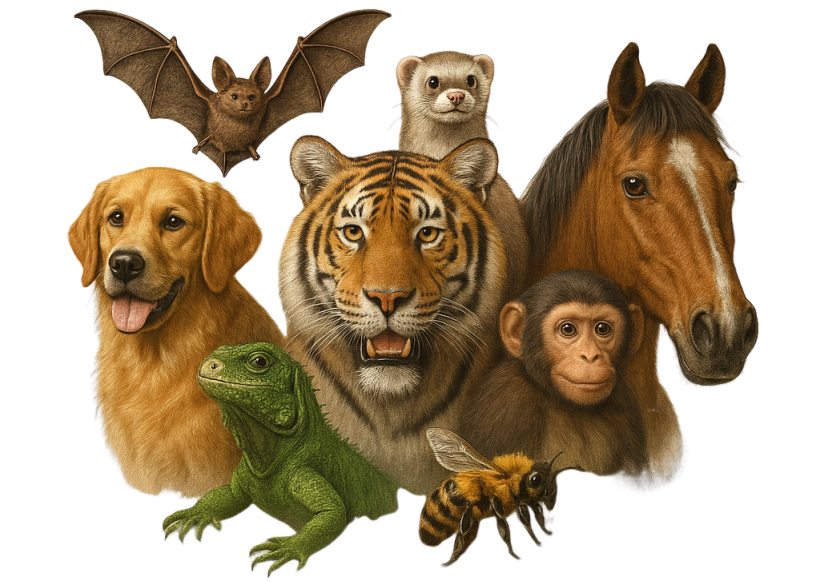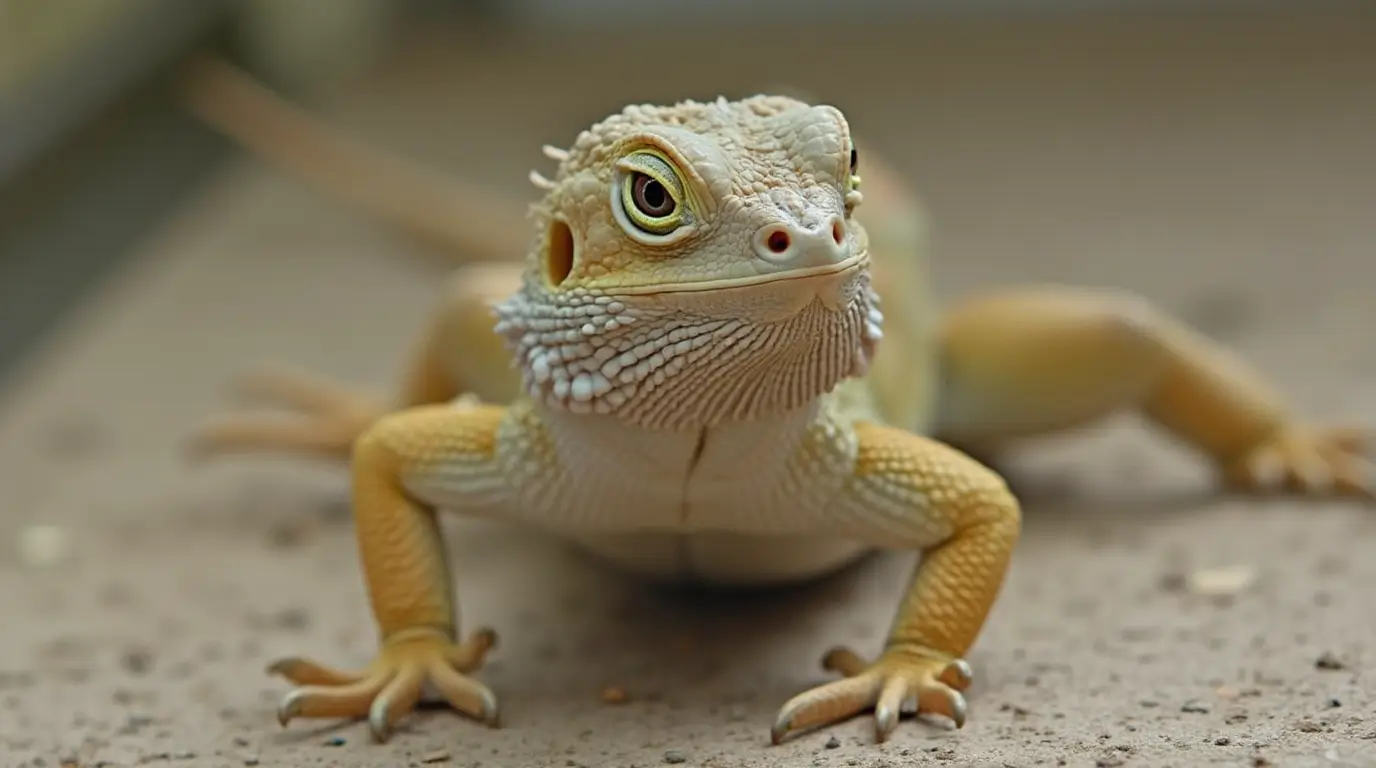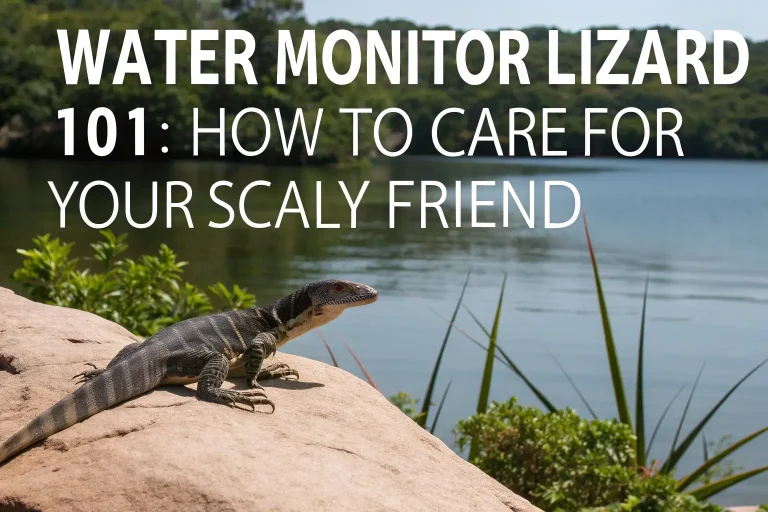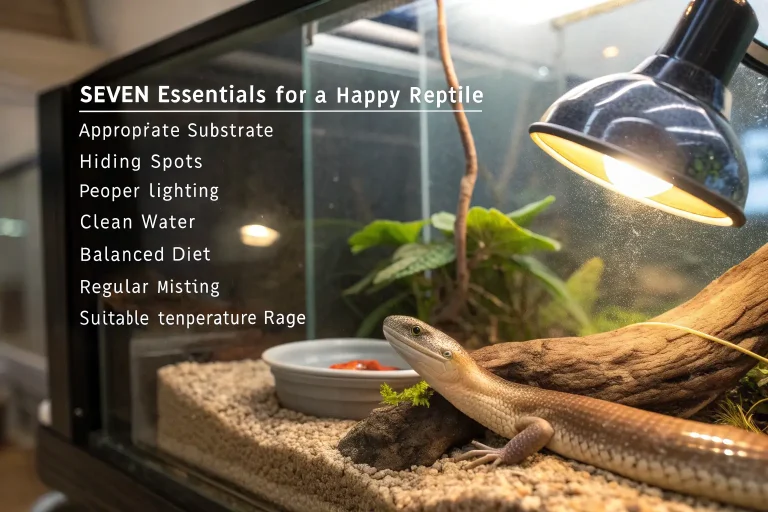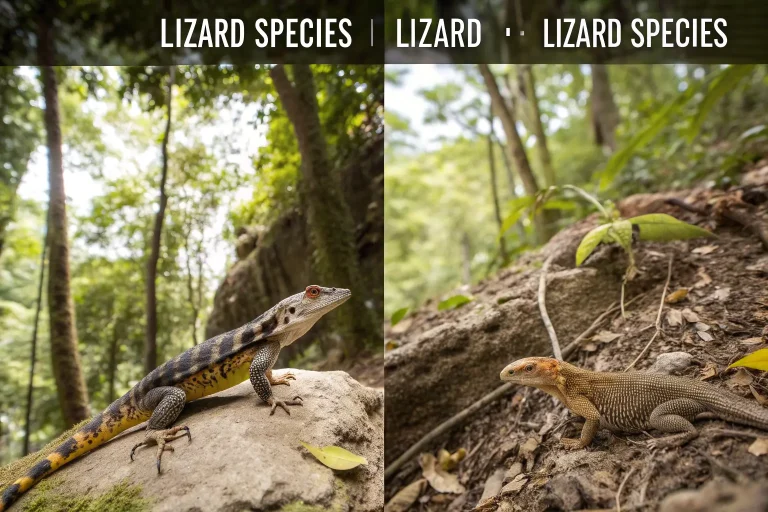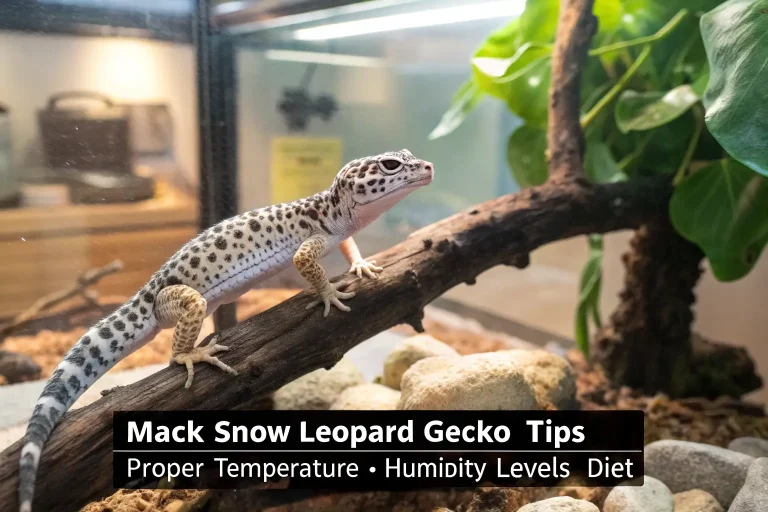Pet Lizard Care: 5 Essential Tips for First-Time Owners
New to reptilian companionship? Master pet lizard care with our 5 expert tips for first-time owners. Ensure your scaly friend thrives! Discover more now.
Introduction
Bringing home your first pet lizard is an exciting adventure into the fascinating world of reptile companionship. These remarkable creatures, with their prehistoric appearance and unique behaviors, offer a different kind of pet experience than traditional furry companions. Proper pet lizard care requires specific knowledge about their environmental needs, dietary requirements, and behavioral patterns that might seem intimidating at first.
Understanding these special needs isn’t just important—it’s essential for ensuring your new scaly friend lives a long, healthy, and happy life in your care. Unlike cats or dogs, lizards can’t vocalize their discomfort or needs, making it crucial for owners to be well-informed before bringing one home.
Did you know that some pet lizard species can recognize their owners and even enjoy interaction? The bearded dragon, one of the most popular pet lizards, has been observed responding to their owner’s voice and showing preference for familiar humans—proving these reptiles are far more aware and connected than many people realize!
Species Overview
Scientific Classification
Pet lizards encompass numerous species across several families within the order Squamata. Popular choices for beginners include the Bearded Dragon (Pogona vitticeps), Leopard Gecko (Eublepharis macularius), and Crested Gecko (Correlophus ciliatus). Each species has distinct care requirements, so identifying exactly which pet lizard you’re interested in is the first crucial step in providing appropriate care.
Physical Characteristics
The physical attributes of pet lizards vary dramatically between species. Bearded dragons grow to about 18-22 inches in length, sporting spiny projections under their throats that expand when threatened or during social displays. Leopard geckos remain smaller at 8-10 inches, featuring distinctive spotted patterns and an endearing appearance with their large eyes and plump tails where they store fat reserves. Crested geckos are known for their distinctive head crests and reach about 8 inches in length.
Many pet lizard species showcase remarkable adaptations like detachable tails (a defense mechanism called autotomy), specialized toe pads for climbing, or remarkable color-changing abilities. Their scales can range from rough and spiny to smooth and glossy, depending on their natural evolutionary path.
Beginner-Friendly Species
- Bearded Dragon: Docile temperament, tolerates handling well, moderate care difficulty
- Leopard Gecko: Hardy, manageable size, relatively simple habitat requirements
- Blue-Tongued Skink: Gentle disposition, interesting behaviors, omnivorous diet
- Crested Gecko: Doesn’t require special lighting, active at dusk when owners are home
- Uromastyx: Herbivorous diet simplifies feeding, enjoys basking and interaction
Habitat and Distribution
Natural Environment
Understanding a pet lizard’s natural habitat provides critical insights into creating an appropriate captive environment. Desert-dwelling species like bearded dragons and leopard geckos have evolved in arid conditions with temperature fluctuations, requiring warm basking spots and cooler retreats. Tropical species like crested geckos need higher humidity levels and more moderate temperatures.
The substrate, hiding places, climbing opportunities, and even the positioning of heat sources should mimic what your particular lizard species would experience in nature. This ensures they can engage in natural behaviors that contribute to their physical and psychological well-being.
Geographic Origin
Bearded dragons originate from Australia’s arid woodlands and deserts. Leopard geckos come from rocky, arid regions spanning from Afghanistan to Pakistan and parts of India. Crested geckos are native to New Caledonia, a group of islands in the South Pacific, where they inhabit tropical forests.
Knowing your pet lizard’s geographic origin helps understand their seasonal adaptations, temperature preferences, and environmental needs. These factors directly influence how you’ll set up their enclosure and maintain appropriate conditions throughout the year.
Adaptive Features
Pet lizards display remarkable adaptations to their native environments. Desert species have evolved efficient water conservation methods, while tropical species might have specialized toe pads for climbing or moisture-harvesting capabilities. These evolutionary traits dictate many of their captive care requirements.
For example, a bearded dragon’s ability to thermoregulate depends on having appropriate temperature gradients in their enclosure. Their natural adaptation to day/night cycles means they need proper lighting schedules that mimic natural photoperiods. Ignoring these adaptations can lead to stress and health complications in your pet lizard.
Tip #1: Create the Perfect Enclosure

Proper Sizing
One of the most common mistakes in pet lizard care is providing inadequate space. For most beginner-friendly species, adults require at minimum:
Bearded Dragons: 40-75 gallon tank (48″L × 24″W × 24″H minimum)
Leopard Geckos: 20-30 gallon tank (30″L × 12″W × 12″H minimum)
Crested Geckos: 20 gallon vertical tank (18″W × 18″D × 24″H minimum)
Remember that baby lizards grow quickly, so investing in an adult-sized enclosure from the start is often more economical than purchasing multiple setups as your pet grows.
Essential Equipment
Every pet lizard enclosure requires specific equipment to maintain appropriate environmental conditions:
- Heating elements: Ceramic heat emitters, heat pads (with thermostats), or basking bulbs
- UVB lighting: Essential for most species (especially diurnal ones) for vitamin D3 synthesis
- Thermometers and hygrometers: To monitor temperature gradients and humidity levels
- Substrate: Species-appropriate bedding that mimics natural ground covering
- Hides: Multiple shelters offering security at different temperature zones
- Water dish: Appropriately sized for soaking (for species that require it)
- Decor: Climbing branches, plants, rocks, and other enrichment items
Temperature Gradients
Creating temperature gradients is critical for proper pet lizard care. Reptiles are ectothermic (cold-blooded), meaning they regulate body temperature by moving between warmer and cooler areas. Your enclosure should provide:
A basking spot (warm end): Species-dependent, but typically 95-105°F for bearded dragons
A cool end: Usually 75-85°F, allowing the lizard to cool down when needed
A nighttime temperature drop: Mimicking natural day/night cycles
Using a thermostat is non-negotiable for controlling heating elements and preventing potentially fatal overheating in your pet lizard’s habitat.
Diet and Feeding Habits
Dietary Needs
Pet lizard dietary requirements vary significantly between species. As a first-time owner, it’s crucial to research the specific needs of your chosen species:
Insectivores (like leopard geckos): Primarily consume insects such as crickets, dubia roaches, and mealworms
Herbivores (like green iguanas): Require fresh leafy greens, vegetables, and occasional fruits
Omnivores (like bearded dragons): Need a combination of insects and plant matter, with ratios changing as they mature
Nutritional balance is critical. Many pet lizard health problems stem from improper diet or nutritional deficiencies.
Feeding Schedule
Establishing a consistent feeding schedule supports good health in your pet lizard. General guidelines include:
Juvenile lizards: Feed daily or even multiple times daily for rapid growth
Adult lizards: Feed every other day to several times weekly, depending on species
Portion control: Offer what can be consumed in 10-15 minutes for insects; remove uneaten vegetables after 24 hours
Observe your pet’s weight and body condition regularly, adjusting portions to maintain healthy weight.
Supplements
Most captive pet lizards require supplementation to thrive:
Calcium powder: Dust prey items 3-5 times weekly (more for juveniles and females producing eggs)
Multivitamin powder: Used less frequently (typically 1-2 times weekly)
Vitamin D3: Critical if adequate UVB lighting isn’t provided (though proper UVB is preferred)
Proper supplementation prevents metabolic bone disease, a common and devastating condition in captive reptiles resulting from calcium/vitamin D3 deficiencies.
Tip #2: Master Temperature and Lighting Requirements
UVB Essentials
For most pet lizard species, UVB lighting isn’t optional—it’s essential. UVB radiation enables lizards to synthesize vitamin D3, which is crucial for calcium metabolism. Without it, even with calcium supplementation, many lizards develop metabolic bone disease.
- Replace UVB bulbs every 6-12 months (follow manufacturer recommendations)
- Position bulbs at appropriate distances according to their strength and your lizard’s needs
- Ensure no glass or plastic barriers between the UVB source and your lizard (these filter out beneficial rays)
Heating Options
Multiple heating options exist for pet lizard enclosures, each with specific applications:
Basking bulbs: Provide visible light and heat, creating a focused basking spot
Ceramic heat emitters: Generate heat without light, ideal for nighttime heating
Under-tank heaters: Work well for species that absorb heat through their bellies
Radiant heat panels: Distribute heat more evenly, beneficial for larger enclosures
Always use thermostats with heating elements to prevent dangerous temperature fluctuations.
Day-Night Cycles
Maintaining proper lighting cycles is often overlooked in pet lizard care but plays a vital role in their health:
- Most species benefit from 12-14 hours of light during summer months
- Slightly reduced light hours (10-12) during winter months can be appropriate
- Complete darkness at night is important (use red or deep blue night-specific bulbs if nighttime observation is desired)
- Some species benefit from seasonal temperature and lighting adjustments that mimic their natural environments
Behavior and Social Structure
Natural Behaviors
Understanding typical pet lizard behaviors helps you recognize when something might be wrong:
Basking: Spending time under heat sources to raise body temperature
Brumation: A hibernation-like state during cooler months (may eat less or be less active)
Shedding: Periodically sloughing off old skin as they grow
Territorial displays: Head bobbing, arm waving, or color changes in some species
Burrowing: Creating hideaways in substrate (particularly important for certain species)
Providing opportunities for these natural behaviors is essential for your pet lizard’s psychological well-being.
Handling Guidelines
Proper handling techniques ensure positive experiences for both you and your pet lizard:
Wash hands before and after handling (protects both you and your lizard)
Support the entire body, including all limbs and tail
Move slowly and predictably, avoiding sudden movements
Start with short handling sessions (5 minutes), gradually increasing as your lizard becomes comfortable
Never grab a lizard by its tail (many can detach their tails as a defense mechanism)
Respect that some pet lizard species are more “display pets” than handling companions. Forcing interaction with a stressed lizard can damage your relationship and compromise their health.
Stress Indicators
Recognizing stress in your pet lizard is crucial for their wellbeing:
Excessive hiding or attempting to escape
Darkening of color (in some species)
Lack of appetite
Aggressive behaviors like hissing, tail whipping, or biting
Abnormal postures or gaping
Glass surfing (repeatedly trying to climb the sides of the enclosure)
When these signs appear, evaluate and adjust environmental factors or handling routines that might be causing stress.
Tip #3: Establish a Proper Health Maintenance Routine
Preventative Care
Regular health maintenance is crucial for your pet lizard’s longevity:
- Regular weighing: Monthly weight checks help track growth and identify potential health issues early
- Parasite prevention: Schedule routine fecal exams with an exotic veterinarian
- Quarantine new animals: Keep any additional reptiles separate for 3-6 months before housing together
- Regular enclosure cleaning: Spot clean daily and deep clean monthly to prevent bacterial buildup
- Wellness checks: Annual veterinary examinations by a reptile-experienced vet
Common Health Issues
Being aware of common pet lizard health problems helps with early intervention:
Metabolic bone disease: Results from calcium/vitamin D3 deficiency; causes weak bones, deformities
Respiratory infections: Often caused by incorrect temperatures/humidity; symptoms include wheezing, mucus around nose
Parasites: Internal or external parasites can cause weight loss, lethargy, abnormal droppings
Impaction: Digestive blockage from ingesting substrate or oversized prey items
Mouth rot (stomatitis): Bacterial infection causing inflammation in the mouth
Many health issues in pet lizards stem from improper husbandry, making education crucial for prevention.
Finding a Reptile Veterinarian
Locate a qualified exotic animal veterinarian before emergencies arise:
Search for “exotic” or “reptile” veterinarians in your area
Ask local reptile societies or pet stores for recommendations
Verify the vet regularly treats reptiles (not just occasionally)
Schedule a preliminary consultation to establish a relationship
Expect higher costs than traditional pet care—specialized reptile medicine typically costs more than dog/cat veterinary services.
Tip #4: Perfect Your Feeding Protocol
Live Food Management
Many pet lizard species require live insects as a primary food source:
- Gut loading: Feed insects nutritious foods 24-48 hours before offering them to your lizard
- Breeding colonies: Consider establishing dubia roach or mealworm colonies for cost-effective feeding
- Size appropriateness: Prey should be no larger than the width of your lizard’s head
- Variety: Offer different insect types to provide balanced nutrition
- Avoid wild-caught insects: These may carry pesticides or parasites
Plant-Based Foods
For omnivorous or herbivorous pet lizard species, proper plant selection is crucial:
Dark leafy greens: Collard greens, mustard greens, turnip greens as dietary staples
Vegetables: Squash, bell peppers, carrots (grated) provide essential nutrients
Limited fruits: Offer as treats rather than dietary staples due to sugar content
Avoid harmful plants: Avocado, rhubarb, and many common houseplants are toxic
Chop vegetables appropriately for your lizard’s size, and always remove uneaten produce within 24 hours.
Hydration Methods
Different pet lizard species have varying hydration needs:
Standing water: Some species drink from shallow dishes
Misting: Many arboreal species drink water droplets from leaves or glass
Drip systems: Provide moving water that stimulates drinking in some species
Soaking: Regular bath sessions benefit some species and aid hydration
Dehydration is a common and serious problem in captive lizards. Learn your species’ specific hydration needs and monitor for signs of dehydration like sunken eyes or wrinkled skin.
Tip #5: Enrich Your Lizard’s Environment
Behavioral Enrichment
Environmental enrichment prevents boredom and promotes natural behaviors in your pet lizard:
- Rearrange decor: Periodically change the layout of your enclosure to provide new exploration opportunities
- Feeding puzzles: Hide food or use simple feeding devices that require interaction
- Multiple climbing levels: Create vertical space with secure branches, ramps, or platforms
- Sensory stimulation: Provide different textures, substrates, and surfaces to explore
- Supervised exploration: Allow controlled time outside the enclosure in a safe, reptile-proofed area
Socialization Needs
Different pet lizard species have varying social requirements:
Most species are naturally solitary and prefer living alone
Housing multiple lizards often requires larger enclosures with multiple basking spots and hiding places
Some species (particularly males) may become aggressive toward each other, especially during breeding season
Regular, gentle handling helps many species become comfortable with human interaction
Always research the specific social needs of your pet lizard species before attempting to house multiple individuals together.
Creating Microhabitats
Within your pet lizard’s enclosure, create diverse microenvironments that serve different needs:
Basking zone: Warmer area with direct light for thermoregulation
Cool retreat: Shaded area away from heat sources
Humid hide: Moisture-retaining area to aid in shedding (particularly important for desert species)
Bathing area: Shallow water dish appropriate for the species
Climbing opportunities: Secured branches, rocks, or commercial reptile furniture
These varied zones allow your pet lizard to self-regulate its environmental needs throughout the day.
Conservation Status
Captive Breeding Importance
Many pet lizard species are now primarily captive-bred, which has significant conservation implications:
Reduces pressure on wild populations
Often produces healthier, more docile animals adapted to captivity
Helps preserve genetic diversity for endangered species
Creates sustainable pet trade options
Always purchase from reputable breeders who can provide information about an animal’s origins and health history.
Ethical Considerations
Responsible pet lizard ownership includes ethical considerations:
Research species’ conservation status before purchase
Obtain proper permits for regulated species
Never release pet lizards into the wild (they rarely survive and may become invasive)
Consider adopting rescued lizards from reptile organizations or shelters
Your choice as a consumer directly impacts the reptile trade and conservation efforts worldwide.
Future Commitment
Before bringing home a pet lizard, consider the long-term commitment:
- Many species live 10-20+ years with proper care
- Adult size and housing requirements may change substantially as they grow
- Ongoing costs include electricity for heating/lighting, food, supplements, and veterinary care
- Having a contingency plan for your pet’s care if your situation changes
Interesting Facts
- Some geckos can vocalize, making chirping or barking sounds to communicate
- Bearded dragons can remember people and may show preference for their primary caretaker
- Many pet lizard species have a third “eye” on top of their head (parietal eye) that senses light and helps regulate hormones
- Blue-tongued skinks flash their bright blue tongues as a warning display when threatened
- Some species like crested geckos were once thought extinct in the wild before being rediscovered
- Leopard geckos store fat in their tails as a survival adaptation for food scarcity
- Many lizard species can regrow their tails if lost, though the regenerated tail differs from the original
Conclusion
Embarking on pet lizard ownership offers a unique and rewarding experience that connects you to the fascinating world of reptiles. By following these five essential tips—creating the perfect enclosure, mastering temperature and lighting requirements, establishing proper health maintenance routines, perfecting your feeding protocol, and enriching your lizard’s environment—you’ll be well on your way to being an excellent reptile caretaker.
Remember that each species has specific needs, and continued learning is part of the journey. Join online communities, connect with local herpetological societies, and develop a relationship with a qualified reptile veterinarian to enhance your knowledge and improve your pet’s quality of life.
As you build your relationship with your scaly companion, you’ll discover their unique personality and behaviors, creating a bond that might surprise those unfamiliar with reptile keeping. Your commitment to providing optimal care ensures not just survival, but a thriving life for your pet lizard—and an enriching experience for you as their keeper.
Frequently Asked Questions
How much does it cost to keep a pet lizard?
The initial setup costs for a proper pet lizard habitat typically range from $300-800, depending on the species and enclosure quality. This includes the terrarium, lighting, heating, substrate, and decor. Ongoing monthly expenses average $30-75 for electricity, food, and supplies. Annual veterinary check-ups cost $75-150, with emergency care potentially running much higher. Budget for replacement of UVB bulbs every 6-12 months ($20-50) and occasional habitat upgrades as your lizard grows.
How often should I handle my pet lizard?
Handling frequency depends on your lizard’s species and individual temperament. Begin with brief 5-minute sessions several times weekly, gradually increasing duration as your lizard becomes comfortable. Most beginner-friendly species like bearded dragons can eventually tolerate 15-30 minutes of daily handling. Always watch for stress signals like darkening coloration or rapid breathing, which indicate it’s time to return your lizard to its enclosure. Some species are primarily display pets and prefer minimal handling.
What’s the easiest pet lizard for beginners?
Bearded dragons typically rank as the most beginner-friendly pet lizard due to their docile temperament, handleability, and straightforward care requirements. Leopard geckos are another excellent choice, requiring less space and no special UVB lighting. Crested geckos thrive at room temperature and have simple dietary needs. Blue-tongued skinks are larger but remarkably gentle and interactive. Always research any potential species thoroughly and choose based on your specific lifestyle, budget, and commitment level rather than just ease of care.
How do I know if my pet lizard is sick?
Signs of illness in pet lizards include lethargy, weight loss, abnormal droppings, difficulty moving, swollen limbs or joints, discolored skin, open-mouth breathing, or loss of appetite. Changes in behavior such as unusual hiding, reduced activity, or altered basking patterns can also indicate health problems. Many reptile illnesses progress rapidly, so prompt veterinary attention is crucial at the first sign of potential illness. Regular weighing and detailed observation will help you detect subtle changes before they become serious conditions.
Can different pet lizard species live together?
Housing different pet lizard species together (cohabitation) is generally discouraged for several reasons: varying environmental needs, potential disease transmission, dietary differences, and risk of aggression or predation. Even within the same species, many lizards are territorial and should be housed individually unless specifically managed for breeding purposes. If you want multiple lizards, the safest approach is separate enclosures tailored to each species’ specific requirements, which also allows you to better monitor individual health and behavior.
